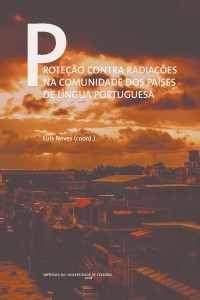Please use this identifier to cite or link to this item:
https://hdl.handle.net/10316.2/44448| Title: | Construção de objetos simuladores patológicos a partir de imagens de tomografia por emissão de pósitrons | Other Titles: | Simulators object construction pathologic from the tomography images by positron emission | Authors: | Morais, C. Vieira, J. Silva, R. Filho, J. Lima Lima, F. Silva, I. Barros, J. Gonzalez, K. Rodrigues Júnior, C. |
Keywords: | PET;Segmentation;Computational Model;PET;Segmentação;Modelo Computacional | Issue Date: | 2018 | Publisher: | Imprensa da Universidade de Coimbra | Journal: | http://hdl.handle.net/10316.2/44443 | Abstract: | Since 2004, the Research Group Dosimetry Computing and Embedded Systems (GPDC & SE) publish works using objects simulators (computational representations of the human body) based on anatomical and physiological information provided mainly by the ICRP (International Commission on Radiological Protection). However, such anthropomorphic models are “healthy”, ie have no pathologies (eg tumor) in their organs and tissues. A possible solution to tumorize these phantoms in a realistic way is to use PET imaging (positron emission tomography), since these functional images enable detection of tumor regions in the human body. For purpose of diagnosis, images obtained are artificially colored so that each color represents the concentration of radioactive material activity metabolised in the region in question (Bq / ml). To separate the tumor from the other information contained in PET imaging is necessary to make a color image segmentation. The targeting criteria used in this study is based on the similarity between the color intensities in RGB space using a mathematical rule for defining the nearest neighbors. From 20 images available from a chest of an adult tumor was performed targeting with the DIP software (Digital Image Processing).. Desde 2004, o Grupo de Pesquisa em Dosimetria Computacional e Sistemas Embarcados (GPDC&SE) publicam trabalhos utilizando objetos simuladores (representações computacionais do corpo humano) baseados em informações anatômicas e fisiológicas fornecidas, principalmente, pela ICRP (International Commission on Radiological Protection). Porém, tais modelos antropomórficos são “saudáveis”, ou seja, não possuem patologias (ex: tumor) em seus órgãos e tecidos. Uma solução possível para tumorizar esses objetos simuladores de maneira realística é a utilização de imagens PET (Positron Emission Tomography), pois estas imagens funcionais possibilitam a detecção de regiões tumorais no corpo humano. Para fim de diagnóstico, as imagens obtidas são coloridas artificialmente de tal modo que cada cor representa a concentração de atividade de material radioativo metabolizada na região em análise (Bq/ml). Para separar o tumor das outras informações contidas em imagens PET é preciso fazer uma segmentação de imagens coloridas. O critério de segmentação utilizado neste trabalho baseia-se na similaridade entre as intensidades de cores no espaço RGB, utilizando uma regra matemática para a definição dos vizinhos mais próximos. A partir de 20 imagens disponíveis de uma torácica de um adulto com tumor foi realizada a segmentação com o software DIP (Digital Image Processing). |
URI: | https://hdl.handle.net/10316.2/44448 | ISBN: | 978-989-26-1602-5 (PDF) 978-989-26-1601-8 |
DOI: | 10.14195/978-989-26-1602-5_5 | Rights: | open access |
| Appears in Collections: | Proteção contra radiações na comunidade dos países de língua portuguesa |
Files in This Item:
| File | Description | Size | Format | |
|---|---|---|---|---|
| construcao_de_objetos_simuladores.pdf | 288.82 kB | Adobe PDF |  |
Items in DSpace are protected by copyright, with all rights reserved, unless otherwise indicated.
